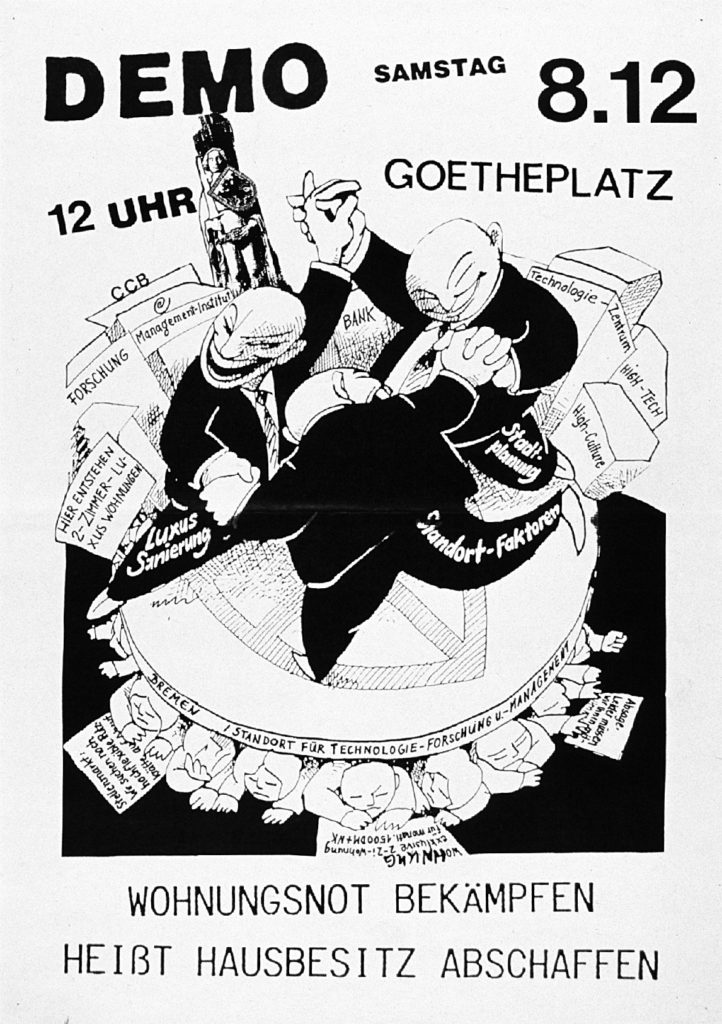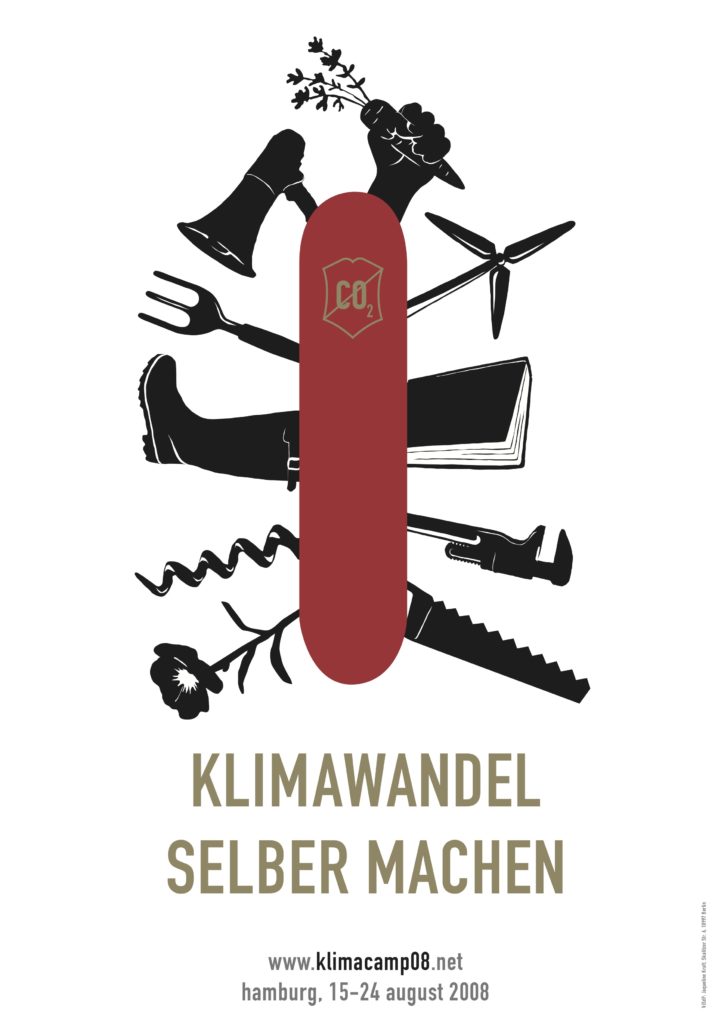
A poject of the course “Social Movements and Protest” at the University of Bremen
Protests are often seen as ephemeral, short-time phenomena. They happen at one given time and with few exceptions they do not remain for longer periods in the collective memory. If protests are large or spectacular enough local (and sometimes even national or international) media will report about a protest, the protesters’ claims, the number of participants, the reactions of those addressed through the protests. But in most cases only those who participated and those who were accidentally present during the protest remember the protest event after it is over.
But while street demonstrations, vigils and manifestations share the fate of short-term visibility, other forms of social movement and protest activity leave much more long-term traces in the cityscape. Posters mobilizing to protests are visible already before a protest takes place and sometimes long after it has happened. Graffiti can be another form of visual political expression that lasts much longer than a demonstration. Stickers with political messages are possible the most ubiquitous form of political communication in the public. Like political posters, some of them last only days, others are still there years after the protests from which they originated

Protest thus leaves manifold visual traces that outlast the more immediate forms of protest. And these traces are unevenly distributed across the city. In some areas it is hardly possible to walk a couple of steps without seeing a political poster, graffiti or sticker attached to a wall or lamp post. In other areas one has to carefully look to find these traces, and in others, they are (almost) completely absent.
During a course at the University of Bremen on the issue of “Social Movements and Protest” have tried to find and document the traces that protests leaves in the city. The posts on this blog document their findings and provide a (completely unrepresentative) glimpse into the visual protest landscape of Bremen.
